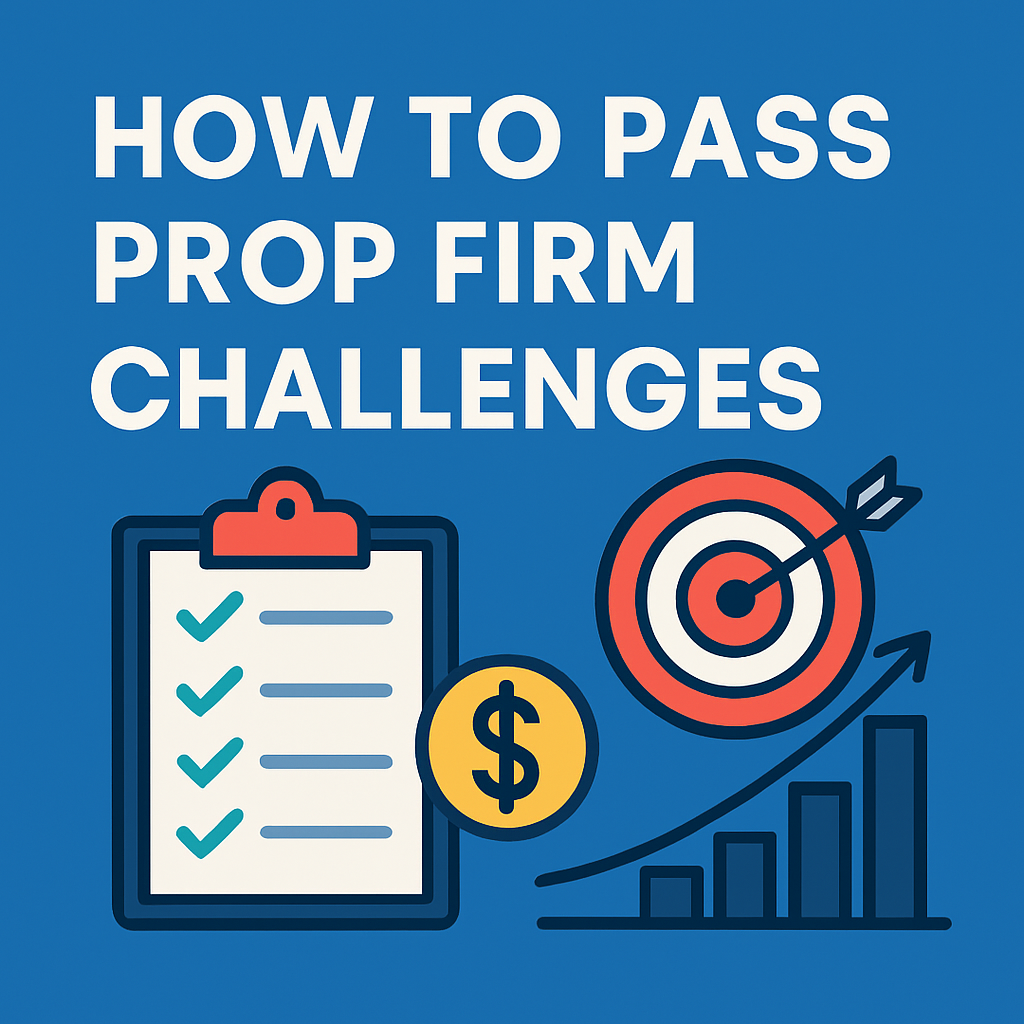
Prop Trading Firms offer a unique opportunity for traders to trade with the firm’s capital and keep a share of the profits. However, before gaining access to this capital, traders must typically pass a prop firm challenge — a structured evaluation designed to assess skill, risk management, and consistency.
Passing a prop firm challenge requires preparation, discipline, and a clear strategy. This guide walks you through the step-by-step process to improve your chances of success.
Step 1: Understand the Prop Firm’s Rules
Each prop firm (e.g., FTMO, TopStep, FundedNext, etc.) has specific requirements and trading conditions. Before you begin, you must understand:
Profit Target: Often 8–10% within a given time (e.g., 30 days).
Maximum Daily Drawdown: E.g., 5%—breaching this ends the challenge.
Maximum Overall Drawdown: Usually 10% from the initial balance.
Minimum Trading Days: Often 5–10 active days required.
Time Limit: Some firms give 30 days for Phase 1, and another 60 for Phase 2.
Leverage & Instruments: Know what you can trade and margin limits.
News Trading Rules: Some firms restrict trading during major news events.
Weekend Holding: Verify if you can hold trades over the weekend.
Tip: Download the prop firm’s rulebook or FAQ and review it carefully.
Step 2: Choose a Trading Strategy That Fits the Rules
You need a proven, consistent trading strategy that aligns with the firm’s rules. The strategy must be:
Backtested with positive expectancy.
Low-risk, to respect drawdown limits.
Adaptable to changing market conditions.
Repeatable, so you can maintain consistency.
Popular strategies include:
Trend-following (breakouts, moving average crossovers)
Reversal setups (support/resistance, divergence)
Price action and candlestick patterns
Scalping or intraday trading (works well with daily drawdown limits)
Tip: Simulate the strategy on a demo account under challenge-like conditions.
Step 3: Create a Solid Risk Management Plan
Risk management is crucial in a prop firm challenge. Focus on:
Risk per trade: Risk 0.25% to 1% per trade.
Daily loss limit: Stop trading if you lose 2–3% in a day.
Maximum trades per day: Avoid overtrading.
Use of stop loss: Always trade with stop losses.
Position sizing: Adjust lot size according to risk and account size.

Step 4: Use a Trading Journal
Track your trades to identify patterns and mistakes. Include:
Entry and exit points
Trade rationale
Time and session
Result (win/loss)
Psychological notes (emotions, discipline)
Apps like Edgewonk, MyFxBook, or Tradervue can automate this process.
Tip: Review your journal weekly to spot habits, errors, or areas of strength.
Step 5: Stay Disciplined and Emotionally Controlled
Discipline often matters more than strategy. To stay focused:
Stick to your plan: No revenge trading.
Avoid over-leveraging: It leads to fast drawdowns.
Accept losses: Losses are part of trading.
Avoid FOMO: Don’t chase trades or news.
Use affirmations, breaks, and breathing exercises to manage stress.
Step 6: Meet the Minimum Trading Days Requirement
If you’ve hit your profit target early, don’t stop — but don’t risk the account either. Instead:
Trade small sizes just to log a trading day.
Take low-risk, low-volatility setups.
Focus on preserving your gains.
Tip: Place micro-lot trades if allowed, simply to meet day-count requirements.
Step 7: Practice on a Simulated Challenge
Before risking money, simulate the challenge environment:
Use a demo account with the same rules.
Track performance over 30 days.
Test your emotional discipline and rule-following.
Evaluate whether your strategy can consistently meet the profit targets without breaching drawdowns.
Step 8: Start the Real Challenge with Confidence
Once ready, enroll in the challenge. During the challenge:
Trade only during your proven hours or sessions.
Avoid impulsive trades or system switching.
Focus on capital preservation first, profit second.
Step 9: Pass Phase 2 (Verification)
The second phase usually has:
A lower profit target (e.g., 5%)
Same drawdown rules
More time (e.g., 60 days)
Trade the same strategy and maintain discipline. This is not the time to get complacent.
Step 10: Secure the Funded Account
After passing both phases:
You’ll receive a funded account.
Follow live account rules — sometimes different than challenge rules.
Withdraw profits per the firm’s policy (monthly or biweekly).
Maintain consistency to keep the account long-term.
Bonus: Common Reasons Traders Fail Prop Firm Challenges
Overtrading and greed
Ignoring the rules (especially drawdowns)
Trading during high-impact news
Lack of a trading plan or journal
Using untested strategies or signals
Final Thoughts
Passing a prop firm challenge is not easy, but it’s absolutely achievable with a disciplined, professional approach. Don’t treat it like a get-rich-quick scheme — treat it like a job interview for capital allocation.
Key takeaway: Focus on risk management, not just profitability. Prop firms reward consistency, control, and discipline — not reckless gains.
